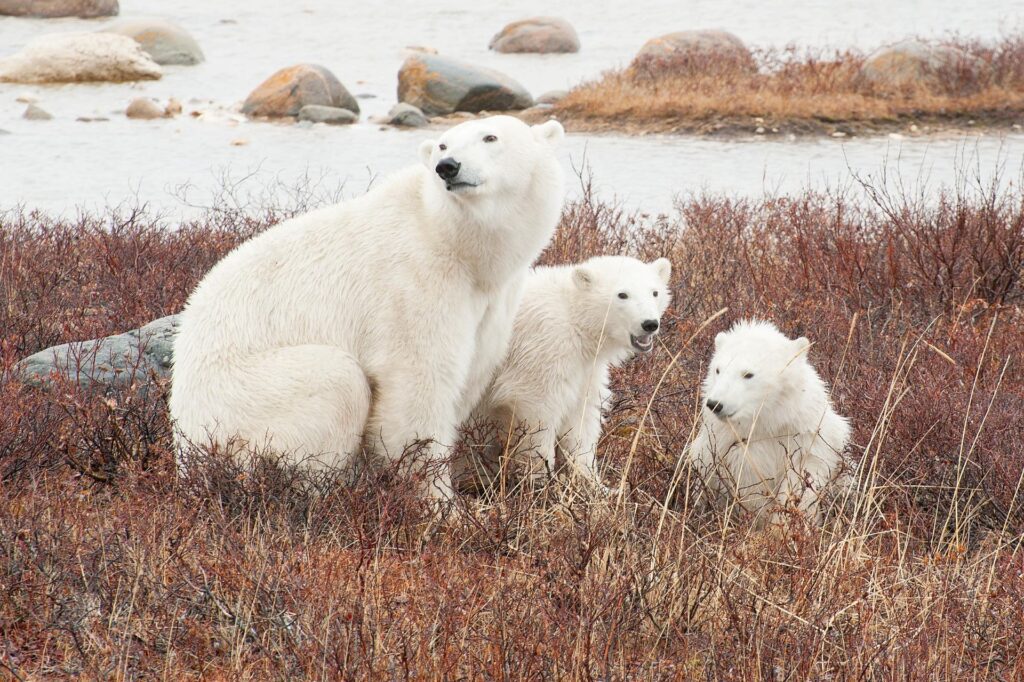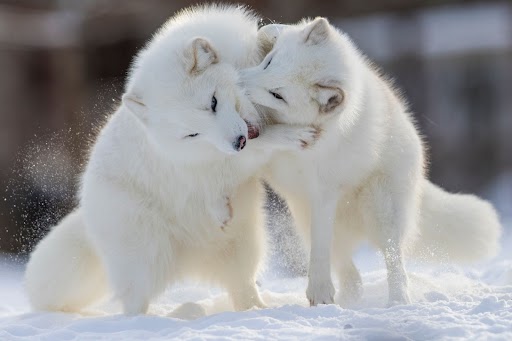Introduction to Mutualism in the Arctic
mutualism in the Arctic is a type of symbiotic relationship where two different species benefit from each other. In the harsh and extreme conditions of the Arctic, mutualistic relationships are crucial for survival, allowing organisms to thrive despite the challenging environment. This article explores various examples of mutualism in the Arctic, highlighting their ecological significance and the interdependence of species within this unique biome.
Types of Mutualistic Relationships
Plant and Fungi Lichens
One of the most well-known examples of mutualism in the Arctic involves lichens, composite organisms consisting of a fungus and an alga or cyanobacterium. The alga provides sugars through photosynthesis, while the fungus offers protection and absorbs water and nutrients from the environment. This relationship is mutualism in the Arctic vital as it allows lichens to colonize bare rocks and survive in extreme conditions where neither organism can thrive alone.
Animal Interactions Caribou and Arctic Foxes
mutualism in the arctic significant mutualistic relationship occurs between caribou and Arctic foxes. As caribou forage for food beneath the snow, they inadvertently expose small mammals like lemmings by digging through the snow. The Arctic fox follows these caribou, taking advantage of the disturbed ground to hunt more efficiently. In this scenario, the caribou remain unaffected while the fox benefits from an easier food source.
Pollination Arctic Poppy and Bumblebee
The Arctic poppy (Papaver radicatum) forms a mutualistic relationship with the Arctic bumblebee (Bombus polaris). The poppy produces nectar that attracts bumblebees, which in turn pollinate the flowers while feeding. This interaction enhances reproductive success for both species; the bee receives nourishment while facilitating fertilization for the plant.
Scavenging Polar Bears and Arctic Foxes
Polar bears (Ursus maritimus) also engage in mutualistic relationships with mutualism in the arctic
foxes (Vulpes lagopus). After polar bears hunt seals or other marine animals, they often leave behind parts of their kill. Arctic foxes scavenge these remains, benefiting from an easy food source without impacting the bear’s hunting success78.
Ecological Importance of Mutualism
Mutualistic relationships mutualism in the Arctic play a critical role in maintaining ecological balance within the Arctic ecosystem. They enhance biodiversity by promoting interactions among different species, which can lead to increased resilience against environmental changes.
Resource Utilization
In an environment where resources are scarce, such as in the Arctic tundra, mutualism allows species to maximize their resource utilization. For instance, lichens provide food for herbivores like caribou during winter months when other food sources are limited.
Habitat Stability
Mutualistic relationships contribute to habitat stability by fostering a network of interactions that support various life forms. The presence of lichens can improve soil quality and facilitate plant growth, which in turn supports herbivores and their predators.
Adaptation to Climate Change
As climate change impacts ecosystems worldwide, mutualistic relationships may help species adapt more effectively. For example, plants that rely on animal pollinators may have better reproductive success if their pollinators can adapt to changing conditions.
Challenges Facing Mutualistic Relationships

Despite their importance, mutualistic relationships in the Arctic face numerous challenges due to climate change and human activities.
Habitat Loss
As temperatures rise and ice melts, habitats are being altered or lost altogether. This can disrupt established mutualistic relationships, particularly those reliant on specific environmental conditions2.
Species Migration
Changing climates may force species to migrate to new areas for suitable habitats or food sources. This migration can disrupt existing mutualisms if species cannot find their partners in new locations.
Increased Competition
With shifting ecosystems come new competitors for resources. For example, as some species move northward into previously uninhabited areas, they may compete with native species for food or habitat space, potentially undermining established mutualistic relationships.
decomposers live in mountain ecosystems
In mountain ecosystems, decomposers like fungi, bacteria, and various invertebrates (such as earthworms and ants) play key roles in breaking down organic matter. Fungi decompose dead plant material, while bacteria break down both plant and animal remains. Invertebrates, like beetles and mites, also contribute by breaking down dead organisms into smaller pieces. These decomposers recycle nutrients back into the ecosystem, supporting the growth of new plants and maintaining soil health.
commensalism in ecology
commensalism in ecology is a symbiotic relationship where one organism benefits and the other is neither helped nor harmed. For example, barnacles attaching to the shells of turtles barnacles get access to more food and movement, while the turtle isn’t significantly affected. This relationship helps the barnacle thrive without impacting the turtle’s well-being. It’s a one-sided interaction that doesn’t cause harm to either species involved.
marine biome
In the marine biome, sea urchins are one of the primary grazers of kelp, using their sharp teeth to scrape the kelp off rocks. Certain fish, like the kelp bass, also feed on kelp, either by nibbling at the blades or eating small organisms living on it. Herbivorous snails, like the kelp snails, can mutualism in the Arctic
also consume kelp. Additionally, some species of crabs and marine slugs rely on kelp as part of their diet.
Case Studies of Mutualism in the Arctic
To further illustrate mutualism’s role in the Arctic ecosystem, let’s examine specific case studies that highlight these interactions’ complexities and significance.
Lichen Diversity and Herbivore Dynamics
Research has shown that lichen diversity directly influences herbivore dynamics in the Arctic tundra: Studies indicate that areas with higher lichen diversity support larger populations of caribou. The availability of diverse lichen types allows caribou to meet their nutritional needs throughout winter months when other forage is scarce.
Bumblebee Population Declines
The decline of bumblebee populations due to climate change poses significant threats to flowering plants like the Arctic poppy: As mutualism in the arctic temperatures rises, bumblebees may emerge earlier than flowers bloom due to mismatched phenology. This disconnect can lead to reduced pollination success rates for plants reliant on these bees during their short flowering periods.
Polar Bear Hunting Patterns
Polar bears’ hunting patterns also illustrate complex interdependencies within ecosystems: Research indicates that polar bears often target specific seal populations based on availability. The remains left behind after polar bear hunts not only benefit scavengers like foxes but also contribute nutrients back into the ecosystem as decomposers break down organic matter.
Key Features Mutualism in the Arctic

Here are some key features of mutualism in the Arctic that you could highlight:
Symbiotic Relationships
Mutualism in the Arctic involves different species working together for mutual benefit. For example, Arctic foxes and ravens have a relationship where ravens lead foxes to prey, and the fox shares the food with the raven.
Adaptation to Extreme Conditions
Arctic mutualistic relationships are crucial for survival in one of the harshest environments on Earth. Species have developed unique adaptations to thrive together, despite extreme cold and scarcity of resources.
Interdependence Between Species
In the Arctic, animals like lichens, mosses, and algae have mutualistic relationships with fungi and bacteria, allowing them to survive in low temperatures with minimal sunlight. These interdependencies help maintain the ecosystem’s balance.
Plant-Animal Partnerships
Some Arctic plants rely on animal pollinators, like insects or birds, to reproduce. In return, the animals benefit from the plants’ nectar or seeds.
Cooperation for Energy
Some species, like seals and seabirds, may rely on each other to hunt for food. Seals, for example, may drive fish toward seabirds, allowing both to catch more food.
Conclusion
In conclusion, mutualism in the Arctic plays a critical role in the survival and stability of the region’s ecosystems. Despite the harsh and unforgiving environment, various species have formed symbiotic relationships that allow them to thrive together, whether through shared resources, protection, or cooperation. These mutually beneficial partnerships not only ensure the survival of individual species but also help maintain the delicate balance of the Arctic ecosystem. As climate change continues to impact the region, understanding and preserving these relationships will be key to safeguarding the future of Arctic biodiversity.


